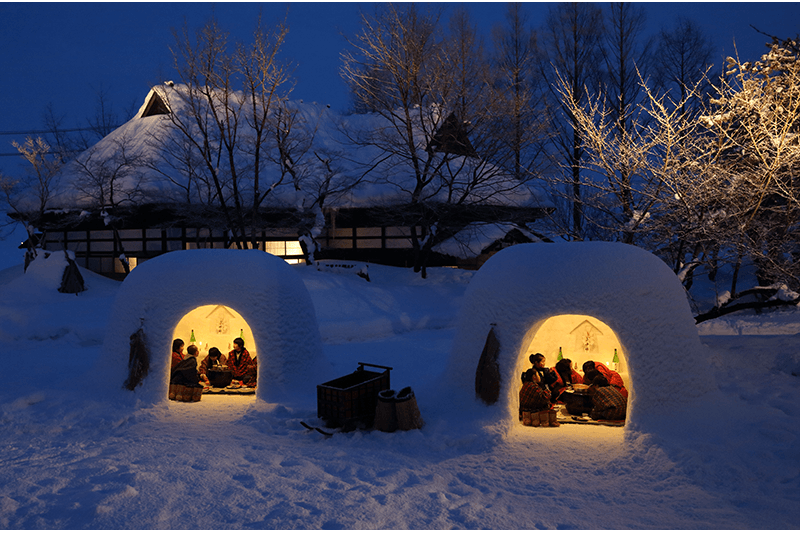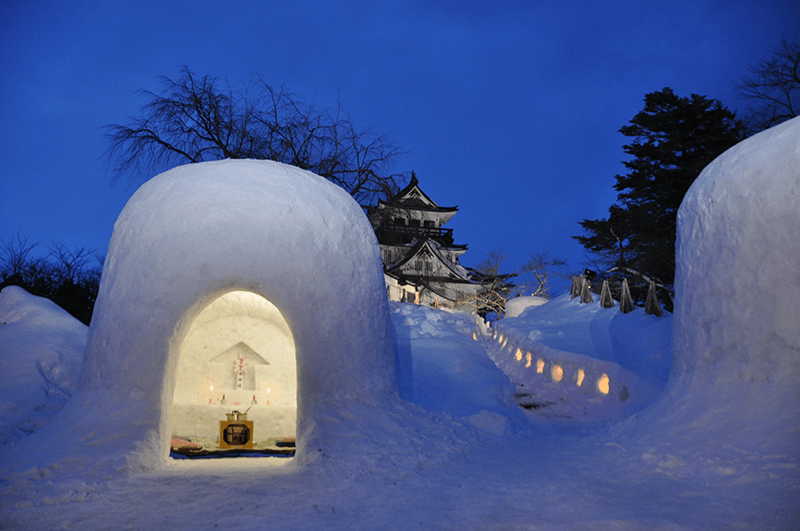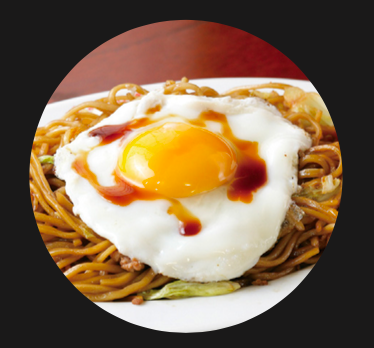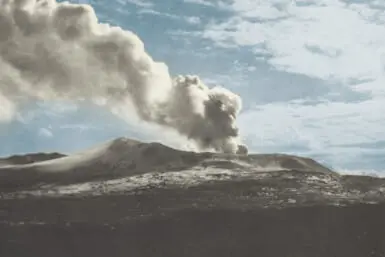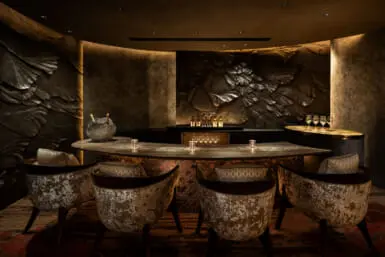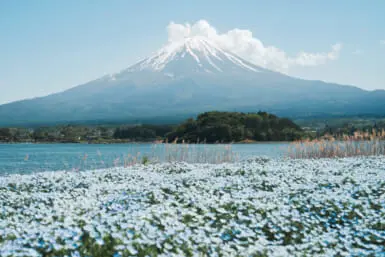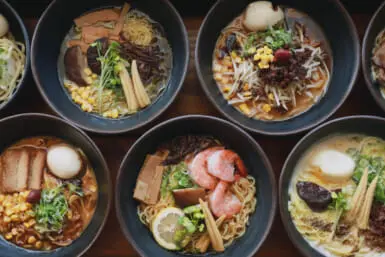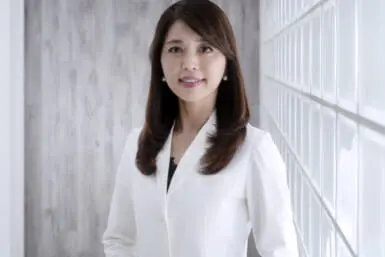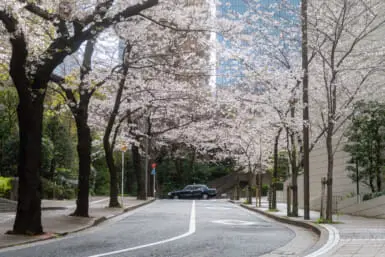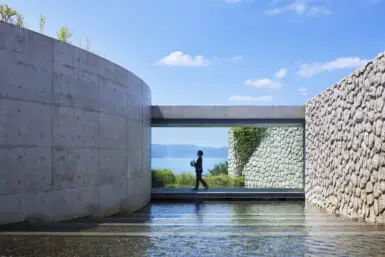Although it’s hard to even imagine snow at this time of year, in just a few short months, Akita Prefecture will soon be covered with it. The region – particularly the city of Yokote in the southeast part of the prefecture – regularly experiences some of the coldest and snowiest winters in all of Japan. Nonetheless, just as many communities around the country put on some of their most vibrant festivals during the hottest weeks of summer, the people of Yokote City – where 20 to 30 centimeters of snow can fall in a single night – embrace the cold and the snow during a centuries-old tradition called the Yokote Kamakura Festival.
Walk through the streets of Yokote in the middle of February and you’ll see them: small, round huts made of snow that look almost like igloos, grouped along the streets of the central neighborhoods and making their way to the foot of Yokote Castle. They’re known as Kamakura, and the people of the city have been building them for almost 450 years.
The huts stand nearly three meters high and four meters wide. In previous generations, they would have been illuminated by the flickering light of candles. Given the frigid temperatures outside, you shouldn’t expect the Kamakura to be particularly cozy, but the greeting you receive should certainly warm you up. During the Kamakura Festival, which takes place from February 15 to 16, guests to the Kamakura are served mochi (rice cakes) and amazake (a sweet drink made from fermented rice). As you walk by the huts, the people inside beckon would-be guests – locals of all ages and foreigners – with hearty greeting in Akita-ben, the local dialect.
As you look around the inside of the Kamakura, your eyes will eventually fall upon one of the hut’s most important guests. According to local Yokote tradition, Kamakura aren’t just shelters for people, they are temporary homes for kami, or local spirits. In all of the Kamakura, you will find a shrine carved out of snow. Typically, it is a shrine for a Shinto water god, and the festival has its origins as a means for praying for a good harvest, and also for the success and safety of the local communities – including protection from fire. Knowing about the spiritual history of the celebration isn’t necessary, of course; the most important thing is to enjoy the warm hospitality during the coldest time of the year.
Even if you’re not able to make it to Yokote during the time of the Kamakura Festival, you can experience the atmosphere inside the huts even during the middle of summer. Next to Yokote City Hall, they maintain a few of the igloo-like structures at a temperature of -15ºC, so you can feel the cool comfort of an authentic Kamakura year-round.
Yokote Yakisoba
It was developed soon after the end of World War II in the city of Yokote, as an afternoon snack for kids and made with wheat flour noodles that are thick and straight, rather than the crinkly noodles that you find in most yakisoba. They are fried noodles, seasoned with a sweetened Worcester-style sauce, and topped with a fried egg, served sunny side up, and a relish of soy-pickled vegetables known as fukujinzuke. As it’s a local specialty, each restaurant in Yokote puts its own unique touch on the dish, from the recipe of the sauce to the extra ingredients each chef might add.
Sponsored Post

